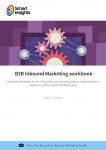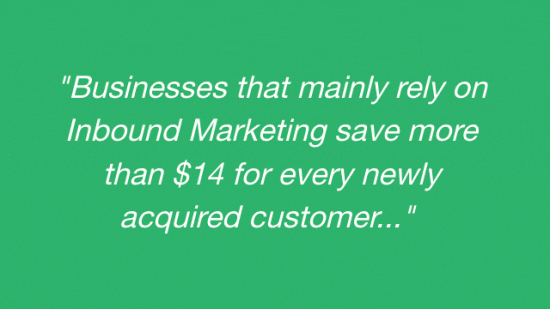The anatomy of a perfect case study varies from business to business, but looking at the bare-bones structure of what goes into an effective B2B case study that converts website visitors or leads, there is a formulaic structure in the delivery of every success story. We’ve compiled a list of action points for you to consider, tailor and apply to your business
Case studies should be part of every B2B inbound marketing strategy. Not only is it a great way to validate your product or service, but it also has SEO value, the ability to generate backlinks, and is a great tool to aid conversion.
Getting started
Whether your organisation provides a product or service, it is likely that a customer purchase will satisfy at least one, or a variety of their pain points. Finding out what those pain points or challenges are will help you choose the right candidate to interview for a case study.
Often organisations prefer remaining brand neutral about associating themselves with brands that helped them solve a problem, which is all the more reason to have a case study programme in place where account managers, sales representatives, or customer service agents are able to identify the ideal case study candidate at the start of the sales cycle.
In an ideal world, upon assessing customer need and presenting solutions, your business representatives would be taking CRM notes of their conversation with the customer, but more often than not, this isn’t recorded.
So where does one start?
Case study candidate selection
The obvious choice would be to contact customers that you know are delighted and evangelical about the product or service they’ve received. One way to discover who they are is to speak with your sales team or account managers.
Your sales team should be able to recommend 3-5 customers that would validate your product and service, and recommend your business.
Set the expectation
To help narrow down the choices, present your sales team with the following considerations:
- Sale or project value – In some cases, any happy customer would be suitable for a case study, but it is recommended to focus on those who have gained the most value and ROI from your business to ensure the biggest impact
- Size of the organisation – The larger the organisation, the more challenging it will be to arrange an interview and get approval from their marketing team
- Barriers to release – Assuming you gain approval for an interview, the case study draft and case study release would need to be signed off by the marketing team. Find out what their internal process for case studies is
- Timescale – How long ago was the purchase made, and what is your marketing team’s timeline for developing, drafting and delivering the case-study?
- Relationship – Choose candidates who have no bias and would have no obvious vested interest in commending your product or service
Case study questions
Since there is no reason to reinvent the wheel, we recommend that you follow a tried and tested sequence for gathering information.
The questions asked in each section will sculpt a better picture of the customers’ experience and help you to tell a story that will compel your potential customers to buy.
Use the following questions to help develop your case study.
Part 1 – Problem
- What did you want to achieve?
- Was there a point where you felt challenged?
- What were your options at the time?
Part 2 – Solution
- How did you hear about [insert your company name]?
- What spurred you on to make the purchase/ hire us?
- Without our solution/product, what did you anticipate the outcome would have been?
Part 3 – Outcome
- Did you achieve your goal?
- What were the results? (Quantitative and qualitative )
- How did [insert your company name] help you achieve your goals?
- Would you do anything differently?
- Would you recommend [insert your company name] and why?
As with any story, there will be the main protagonist with characters and supporting roles. Make your customer the hero of the story and cast your organisation as the supporting role.
Your case study should answer all the following questions:
Who? – Who was the customer?
What? – What did they want to achieve?
When? – At which stage did your organisation enter the story? [Problem]
Where? – Where does your organisation fit into the overall story?
Why? – Why did the customer buy your product or service?
How? – What did your organisation do to help the customer achieve their goal? [Solution]
Outcome – What were the results for your customer? [Outcome]
Case study formatting
Once you’ve collated and compiled all the case study answers, it’s time to package everything up into an easily digestible 1-2 page story that outlines the beginning, the middle, and the end of your customer’s experience with your organisation.
The recommended outline for your B2B case study is as follows:
- Title
- Executive summary
- About the customer
- Customer challenges and objectives
- Solutions and delivery
- Results
- Supporting quotes and visuals
We think case studies are a great way to promote your business and to prove that your organisation delivers on a promise. In addition, case studies have repurposing value for everyone in your organisation, even if it’s just a quote or a statistic for an email signature, presentation, landing page or video.
Make case studies a part of your B2B inbound marketing strategy and fortify your sales teams’ arsenal, while at the same time reassuring your website visitors and potential customers, that choosing your business will lead to a successful outcome.
We’d love to hear how you are using your Smart Insights membership! Please contact us if you’d like your organisation to be featured in one of our case studies. Contact us.


